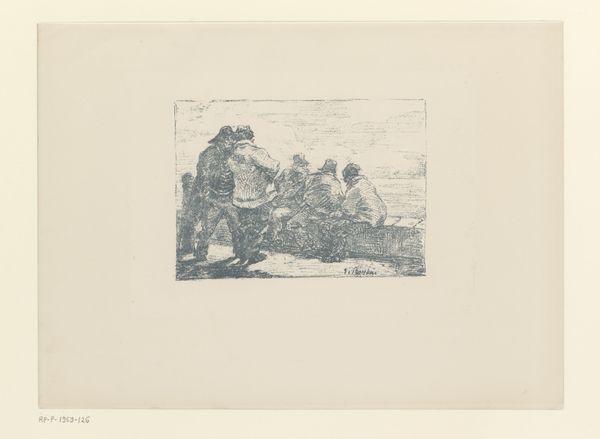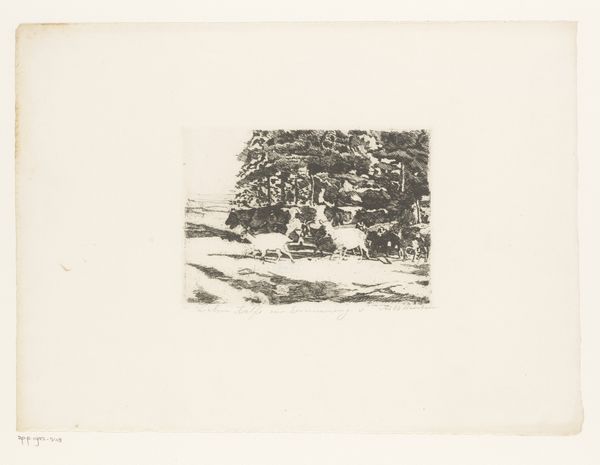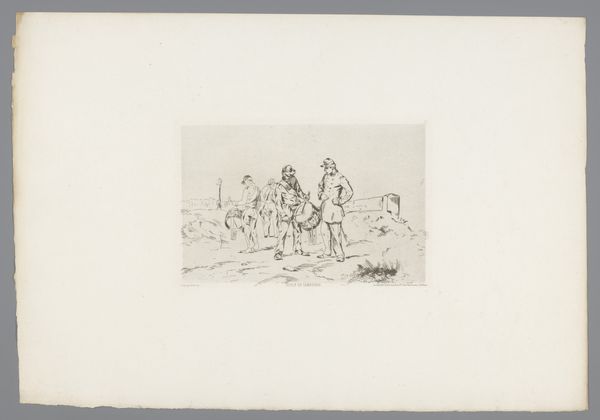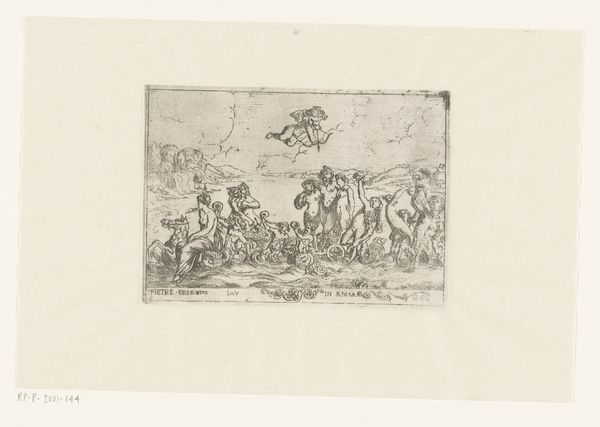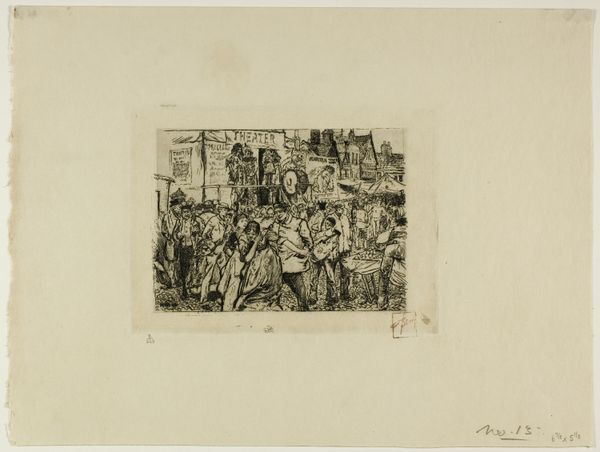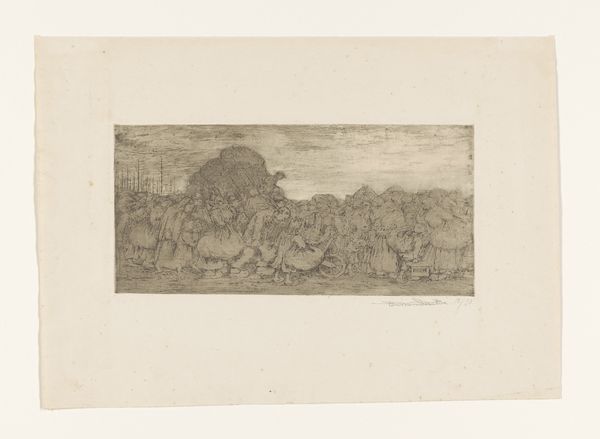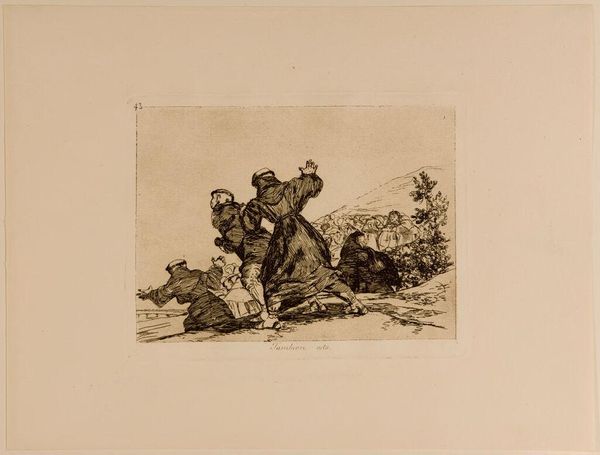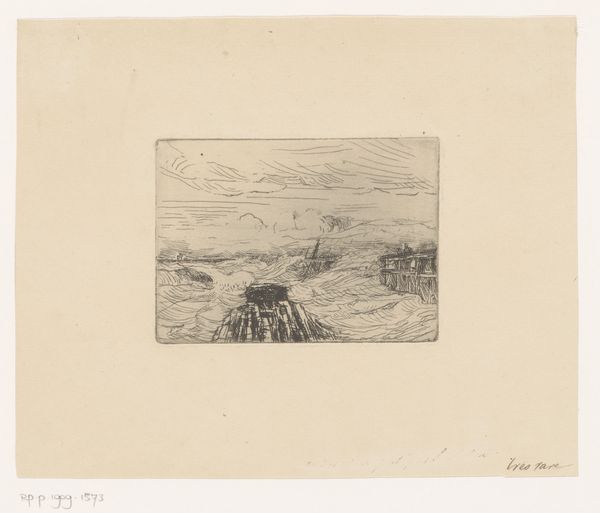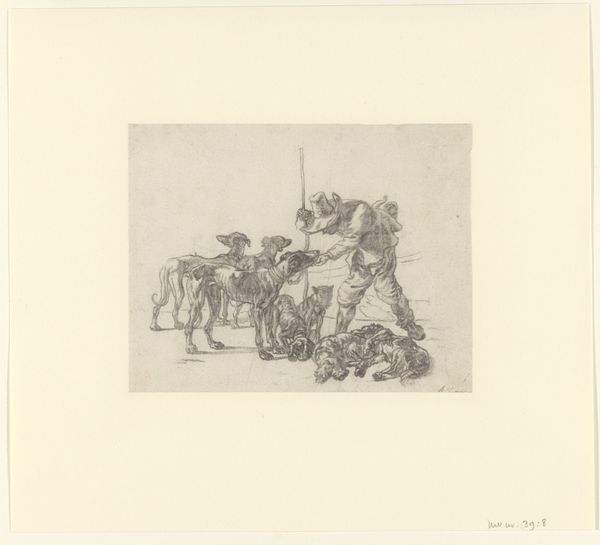
drawing, print, etching, paper
#
drawing
# print
#
etching
#
old engraving style
#
landscape
#
figuration
#
paper
#
realism
Dimensions: height 123 mm, width 159 mm
Copyright: Rijks Museum: Open Domain
Curator: At first glance, this print evokes a sense of rustic charm. The fine etching creates a muted scene of a woman with her goats in a field. There is a quiet humility here. Editor: Indeed. Let’s dive in a bit. What we have before us is an artwork titled "Vier geiten en een boerin in de weide", or "Four Goats and a Farmer’s Wife in the Meadow." The artist is Adolf Eduard Herstein and while the exact year of its creation is uncertain, it was made sometime between 1879 and 1932. This etching and print on paper currently resides here at the Rijksmuseum. Curator: What stands out for me is the woman's relationship with her animals. Her form is so intertwined with the goats. It's not just about labour; it is as though they are coexisting almost like a singular unit in this landscape. Do you see her almost as an extension of the landscape itself? Editor: Absolutely, and I think that reflects a broader societal shift. Throughout the late 19th and early 20th centuries, realism began to move away from idealizing rural life. Instead artists portrayed the lives of rural people without romantic embellishments. We're not seeing idealized shepherdesses here but the simple fact of labor on the land. It reflects growing urban anxieties about industrialization as well. Curator: It also evokes the biblical and classical imagery of shepherds, re-contextualized into the life of working rural class during that time period. The etching, with its stark, contrasting lines, brings to my mind how humans and nature have maintained a longstanding relationship that we continuously renegotiate through cultural symbolisms and imagery. Editor: That contrast is key, particularly because Herstein is making an argument, through visual language, about labour, place and value. He creates a moment, framed by the etching technique. This creates a space for us to contemplate how labor and identity connect through social and economic forces in a society that has always relied on that natural landscape. Curator: Very interesting! So, while I look at the symbolism inherent to the imagery itself, you focus on how those symbols mirror social anxieties within a society! Editor: Exactly. Curator: Well, seeing it this way certainly enriched the experience. Editor: Agreed. This conversation reframes this artwork in terms of material, society, and symbolic expression, so there is indeed more to explore than meets the eye.
Comments
No comments
Be the first to comment and join the conversation on the ultimate creative platform.
